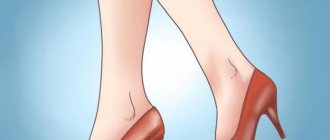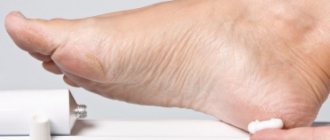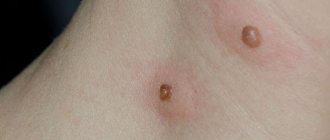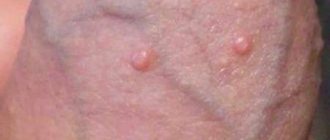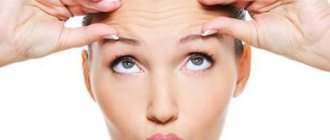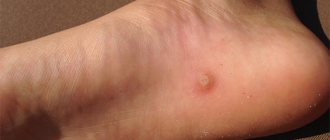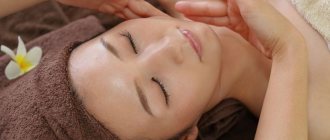Beautiful and high-quality shoes do not at all guarantee the comfort of staying in them, much less not causing consequences from wearing them. A common problem that occurs when a person wears sometimes uncomfortable shoes or stays in them for a long time is corns. How to remove corns on feet quickly and safely? Do you really have to use the services of professionals and pay a lot of money for it? Not necessary. There are many available methods that can get rid of corns.
Salicylic acid for corns
It is no coincidence that salicylic acid is the basis of many keratolytic agents. This is due to its healing properties: the ability to soften the skin and exfoliate dead cells from its surface. By acting on the corns, it helps to painlessly remove them with a pumice stone or brush. In the pharmacy you can find salicylic acid, presented in the form of a solution, ointments and even patches.
This product should be used with caution. Excess salicylic acid can cause a burn. Therefore, it must be applied strictly to the callus, without affecting the healthy skin around it. Salicylic patches are convenient in such cases. It is easy to cut out a piece of the desired shape from them, thus avoiding burns to the skin around the corns.
You can treat the callus with a salicylic acid solution several times a day. If an ointment is used for treatment, a bandage is soaked in salicylic acid and then applied to the foot. It is also convenient to use a sterile napkin in such cases.
When used correctly, salicylic acid rarely causes irritation or itching. However, if such a reaction occurs, treatment should be stopped immediately.
Celandine for corns
Celandine is a widespread plant that is used in the treatment of many diseases. Its stems and leaves are bright green, its flowers are yellow. You can distinguish celandine from other herbs by its orange milky juice. You should look for this plant in shady places.
Celandine is used in both folk and traditional medicine due to its bactericidal, anti-inflammatory and antispasmodic properties. With its help you can relieve pain, get rid of inflammation on the skin, and cleanse it.
Celandine is harvested during the flowering period, carefully drying the stems and leaves. Such raw materials can be used for preparing medicinal tinctures for 3 years. However, to remove corns, take fresh celandine. Its leaves and stems should be thoroughly chopped. You need to act carefully: celandine juice is difficult to wash off from things. Apply the resulting paste to the place of the callus, cover with foil on top and put on socks. This compress can be done at night for a week. In the morning, the corns should be treated with a pumice stone or a brush.
Despite its medicinal properties, celandine is useful in moderate doses. Its juice can cause severe poisoning, nausea, vomiting and headaches. Therefore, you need to use celandine carefully, carefully observing the body’s reaction to it.
Description of the drug
“Super cleanser” is a popular product that quickly and efficiently removes all kinds of skin defects: corns, warts, calluses and papillomas. Although the name includes the name of the herb celandine, the extract does not contain the popular plant. Using celandine juice damages the skin pattern, but “Super celandine”, thanks to its balanced composition, restores it.
Three active ingredients, such as lye, soda and salt, are contained in a small bottle with a convenient dispenser stick. When alkali gets on a new growth, it cauterizes it, promoting necrosis and exfoliation, and soda and salt neutralize further effects, protecting it from the harmful effects of alkali. In this way, quick and, most importantly, effective removal of calluses is achieved.
Soda for corns
One of the most effective and affordable means for removing dry calluses is baking soda. It is inexpensive and has many useful properties. Using soda, you can cleanse the body and remove heavy metals such as bismuth, cadmium, and mercury. This remedy is used to prevent cancer, treat rheumatism, radiculitis, and osteochondrosis. Baking soda softens the skin well, so it is also used to get rid of corns. To achieve better results, it is combined with other folk remedies.
First of all, baths help with corns. The feet must be kept in water with soda for half an hour. Usually dissolving a couple of tablespoons is enough. In addition to soda, you can add the same amount of crushed soap and ammonia.
Compresses are also quite effective in combating corns. A mixture of tomatoes and soda should be left for 15 minutes and applied to the place of calluses, covering with film on top. Typically, such procedures can get rid of corns in a few weeks. Instead of tomatoes, you can take onions, grated or finely chopped with a knife. The mixture must be kept for at least 8 hours.
A useful remedy for corns is obtained from soda and prunes. Dried fruits need to be cooked until they become soft. Then the prunes are crushed and mixed with soda. As in the previous case, a warm compress is applied for several hours.
On the topic: how to quickly get rid of corns?
Complications and treatment
If you remove the corn incorrectly, without following hygienic requirements, there is a high probability of an abscess forming in its place. Suppuration occurs as a result of the multiplication of the introduced infection and tissue death.
With the development of an infectious-inflammatory process, an increase in local body temperature occurs. When the form is advanced, there is a possibility of an increase in the overall temperature. The corns with the stem swell and redden, and a pain syndrome occurs that is constantly present, which brings significant discomfort. When a purulent formation grows and adjacent tissues of the corn are damaged, there is a high probability of mild ailments and a deterioration in the general condition.
Suppuration is especially dangerous for people who have diseases of the cardiovascular system and endocrine pathologies. Disturbed processes of blood flow and metabolism lead to the rapid development and spread of infection and tissue atrophy.
When the corns become suppurated, surgical intervention is required. Also, surgical therapy is indicated for significant pain and discomfort in the foot, which is caused by the significant size of the corn. Surgical removal of corns is indicated for recurrent pathology or lack of effect from conservative therapy.
In surgical practice, the removal of dry calluses and corns is carried out by affecting the compaction:
- laser;
- nitrogen;
- blade.
In addition, the problem caused by foot deformity can be surgically solved. In case of foot deformation, gentle orthopedic methods are initially indicated:
- silicone and foam wedges;
- wearing special orthopedic shoes;
- use of orthopedic insoles.
Removing calluses and corns without surgery is possible by using special creams, ointments and traditional anti-corns remedies. If an infection is attached or if the compaction is of fungal origin, removal of corns also involves a course of antibacterial therapy.
Onion for corns
Onions are not only a healthy vegetable, but also a traditional medicine. It contains many useful substances and vitamins. Onions are used to prevent and treat colds and improve the functioning of the digestive system. It has a positive effect on hair and facial skin, so preparations based on it are used in cosmetology.
Onion compress helps with corns. There are several variations of its recipe:
- Keep half the onion in vinegar for a day. Then apply the soaked leaves to dry calluses twice a day;
- mix finely chopped onion with milk and lubricate the resulting mass on the corns;
- Leave the onion skins in vinegar for 2 weeks. Apply it to calluses at night.
You can use fresh onion juice. If you regularly lubricate the areas of rough skin with it, you will soon be able to forget about dry calluses. At night, it’s good to apply fresh onion rings or chop them and mix them with potatoes. From above you need to wrap your feet with film and put on socks.
Baked onions are also used to treat corns. A large fruit is cut in half and baked in the oven for at least 20 minutes. Then one half is boiled for 3 minutes in boiling water. This solution is used for the bath. A compress from the second half of the baked onion is applied to the steamed skin of the feet. It should be crushed. Keep the mixture for several hours.
Apple cider vinegar for corns
Regular apple cider vinegar relieves pain from insect bites, relieves heat and temperature, and improves the appearance of hair. You can gargle with its solution when you have a cold. Compresses based on apple cider vinegar are a surefire remedy for corns. They are made according to different recipes depending on the location of the corns formation.
If a dry callus has formed on the sole, then you should prepare a mixture of apple cider vinegar, baking soda and sea salt. Apply the compress with a bandage or bandage at night, cover with foil on top and put on socks.
Dealing with corns on your fingers is more difficult. An effective remedy in this case would be a crust of black bread soaked in apple cider vinegar. It needs to be carefully applied to the callus. Put a bag on top and then warm socks. Vinegar can be infused with onions.
There is another option for a remedy for corns on the fingers. The chicken egg must be washed and left in apple cider vinegar with a concentration of 80% for 10 days. Soak a cotton pad in the resulting solution and use it as a night compress. This treatment takes a lot of time, but gives good results.
You can pour a few cloves of garlic in apple cider vinegar and leave for 2 weeks, and then use it as a compress. Regardless of which recipe is used, after the procedure the corns are carefully removed with a pumice stone.
Essential oils for corns
With the help of essential oils you can do massages, baths and compresses for dry calluses. All of these remedies are equally effective in the fight against corns.
Massage using vegetable oil is a painless and pleasant way to get rid of dry calluses. To do this, the product must be warmed up and applied to the feet with gentle movements. Massage rough skin areas for at least 5 minutes. Then your feet should be washed thoroughly in warm water. Vegetable oil goes well with lemon. This mixture is also suitable for massage.
If you add 10 drops of lemongrass and 20 drops of marjoram, tea tree, and sage to 15 drops of oregano and citronella oil, you will get a very aromatic remedy. It should be rubbed into the skin of the feet.
You can enhance the effect of regular baths with the help of essential oils. Add a couple of drops of tea tree oil to water with salt, and lavender or rose oil to the soda solution. Keep your feet in the bath for no more than 15 minutes.
You can make special compresses with essential oils every day. A cotton pad soaked in a mixture of lemon, marjoram, and lavender oils must be applied to the corn for 10-15 minutes. This must be done carefully so as not to hurt healthy skin. The compress mixture can also consist of the following ingredients: a little lemon juice, 2 drops of tea tree oil and a clove of garlic.
List of modern remedies for corns
Application for heels
Sodium carbonate is used to prepare foot baths, as a cleanser, and added to masks, compresses, and foot creams. When combined with other ingredients, the effectiveness of the product increases.
After steaming in a soda bath, rough skin is cleansed and softened, a scrub with oil gently removes rough heels, compresses disinfect and soften, preventing the occurrence of fungal diseases and unpleasant odors.
Castor oil for corns
Castor oil is very viscous and viscous and has many beneficial properties. It is used to soften the skin and give it elasticity, accelerate hair growth and restore it. In cosmetology, castor oil is added to many preparations and used in the manufacture of face masks. It helps cope with wrinkles and aging skin.
Due to its softening effect, castor oil can also be used to get rid of corns. It needs to be warmed up and applied to the feet, wrapped in film, and put on socks. It is recommended to leave this compress overnight or keep it for several hours. In the morning, dry calluses are cleaned off with pumice.
Causes of dry calluses
Horny areas on the feet form gradually.
The main cause of calluses is considered to be uncomfortable shoes that squeeze the toes and do not allow air to pass through.
Increase the risk of developing pathology:
- walking in high heels;
- thin sole that poorly protects the feet from injury;
- wearing socks made of artificial materials;
- excess weight;
- endocrine diseases;
- impaired blood circulation in the lower extremities;
- flat feet;
- increased sweating of the feet;
- fungal infection.
People who do physical labor and athletes are more likely to develop calluses. Excessive stress on the feet causes friction and compression of the skin. As a result, the outer layer coarsens, becomes hard and rough.
Foot bath for corns
Before starting to treat rough skin with compresses, ointments or creams, they should be steamed. The feet are kept in hot water or herbal infusion, sometimes sour milk whey is used. But salt baths also help well in such cases. Take a tablespoon of salt per liter of cold water. Several procedures help relieve pain and soften the skin at the site of corns. You can take such a bath for half an hour. Gradually, dry calluses will disappear. The number of procedures required for complete recovery depends on the degree of neglect of the corns.
Baths for corns on feet
Before you start treating dry calluses at home, you need to steam your feet. To do this, you should make baths. They soften the skin before using keratolytic preparations and folk remedies. However, baths are a good method to get rid of corns without using any creams or ointments. It is enough to keep your feet in warm water or infusion for half an hour, and then treat the rough areas of the skin with a pumice stone or a soft brush.
To completely remove dry calluses, you may need to do this procedure several times. Baths are an essential part of the prevention of corns. If you do them regularly, dry calluses will not form and the skin will remain soft and smooth.
To enhance the effect, you can add soda, soap, and sea salt to the bath water. The use of herbal infusion or solution of permanganic acid also has a good effect on the skin of the feet. A universal bath recipe for both the prevention and treatment of dry calluses: add 2 tablespoons of soda, crushed soap and ammonia to 2 liters of water. Other options are also possible.
For example, keep your feet in warm sour milk. It has a specific smell, but softens the skin well. You can use a herbal infusion of thuja, St. John's wort and calendula for a bath. The dry mixture is brewed with boiling water and infused. Before use, the cooled solution must be warmed up. It is recommended to do such baths within a week to achieve the best results.
Daily foot care
Proper daily care will prevent many foot problems. Follow these simple rules in foot care:
- after washing your feet, do not forget to rinse them with cold water;
- Rub the problem areas of your feet with pumice every time to prevent the appearance of calluses;
- Before going to bed, rub your feet with a rich cream.
Take care of a good foot cream, it will become your assistant. I have two favorites:
1. Shea butter
2. SPA cream with shea butter for elbows and feet from Avon
I hope that the information and baking soda foot soak recipes provided will help you keep your feet soft, moisturized and healthy. And let your gait be flying and attract attention with its ease.
